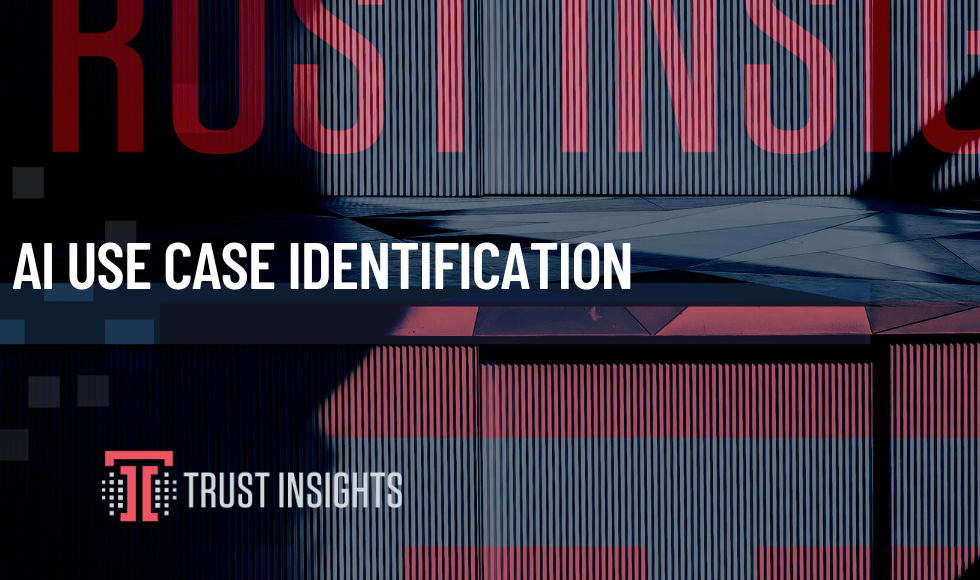This data was originally featured in the April 24th, 2024 newsletter found here: INBOX INSIGHTS, APRIL 24, 2024: DOWNSIDE OF SHORTCUTS, AI USE CASE IDENTIFICATION
In this week’s Data Diaries, let’s talk about identifying AI use cases. In case you missed it, yesterday’s Generative AI for Agencies recapped the major use cases of generative AI and large language models:
- Generation: the most commonly thought of, making stuff
- Extraction: pull data out of a source and reformat it
- Summarization: turn big data into small data
- Rewriting: turn one kind of data into another
- Classification: organize your data
- Question Answering: answer questions about data
In this context, data is any form of text.
The challenge here is that generative AI and language models in particular are so versatile, they can tackle any language-related task. That means any task within your company that uses language is a candidate use case. So how do you identify use cases when everything could be a use case?
This goes back to the 5P framework: purpose, people, process, platform, and performance. Like the golden delicious toasted ciabatta you use for a BLT, purpose and performance are the book-ends for people, process, and platform. What purposes are you trying to accomplish in your marketing? What performance are you looking to improve?
Sketch out your marketing operations funnel. What are the major stages? Most companies have something that looks more or less like this:
- Awareness: people know we exist. Measured in stuff like website traffic or social followers. No commercial intent.
- Consideration: people know we solve a general category of problems. Measured in things like newsletter subscribers or downloads. Very tiny commercial intent, not even enough to be considered leads.
- Evaluation: people are asking if we can solve their specific problem. Measured in things like marketing qualified leads.
There may be granular stages, but these are the broad categories. Now, which of these categories is your area of weakness? Which phase transition (awareness -> consideration, for example) is your weakest layer of conversion?
Once you identify that, then look at your current processes in that layer, and identify which of the six use case categories that process incorporates. Let’s say your weakest area is turning prospects like newsletter subscribers into marketing qualified leads. The purpose is clear – generate more leads to eventually turn into sales and revenue. The performance is equally clear – marketing qualified leads. What processes do you currently use to do this?
Suppose one of those processes is nurture emails. You might look at those emails and decide they’re not performing well. Which of the six use case categories might you apply? You might create an ideal customer profile from your existing data – summarization – and then ask that ICP to evaluate your email – question answering – and then rewrite the emails to be more appealing – rewriting. Then you’d test and see if the results were better.
The use cases for generative AI are infinite, but the problems we face in our marketing are specific. Rather than try to invent use cases and justifications for using generative AI, identify the most broken things in your own marketing operations and candidate use cases for generative AI will become apparent quickly.









One thought on “AI Use Case Identification”